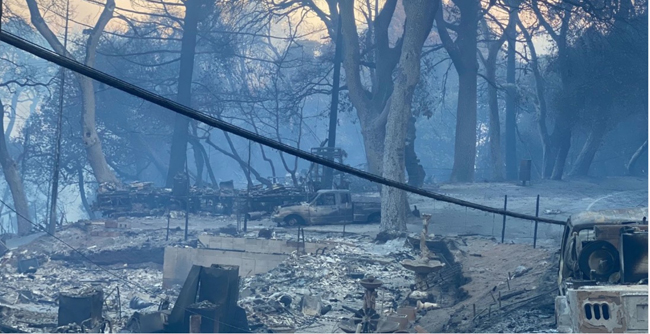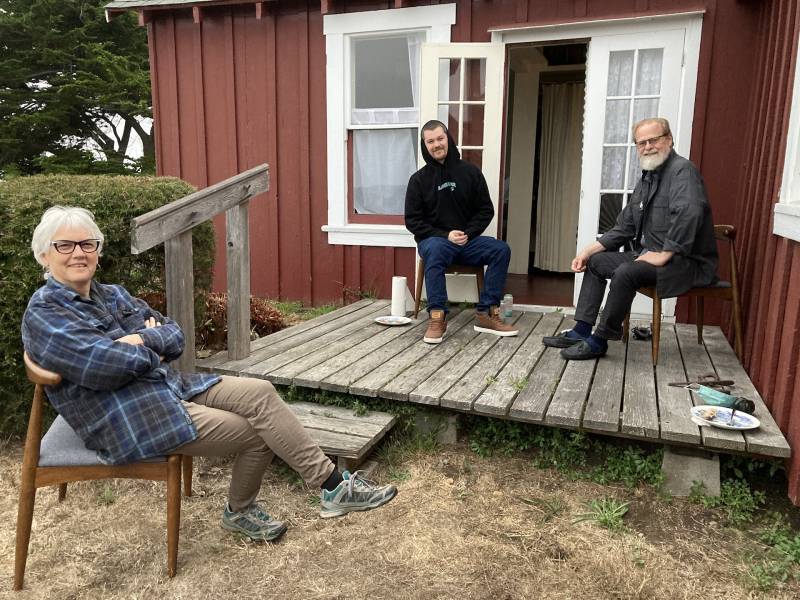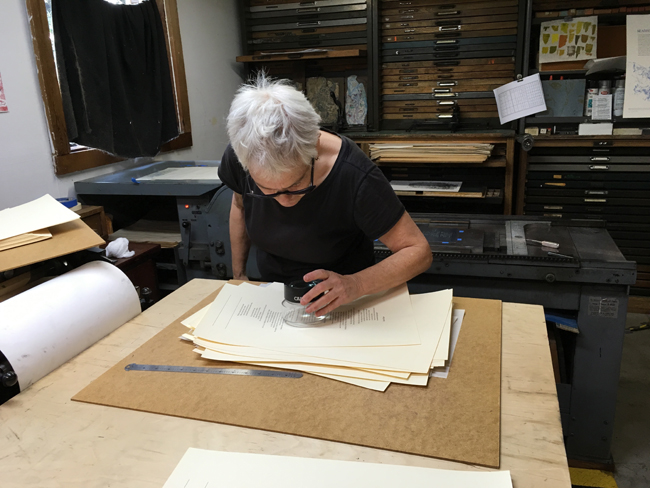F
elicia Rice’s husband, Jim Schoonover, often joked that the house they rented in the Santa Cruz mountains was really a one-bedroom apartment above her business, Moving Parts Press.
Over the 25 years the family lived there, the book artist, publisher and former UC Santa Cruz administrator filled the downstairs with three vintage letterpresses, 190 cases of metal type and her personal collection of limited-run poetry and art books she’d published since starting her business in 1977. Paintings by her parents, artists who worked closely with the apprentices of Frida Kahlo and Diego Rivera, were lovingly kept there, as well as irreplaceable ancestry records and family photos.
The Schoonover Rices’ younger son, Will, the Oakland music producer Wax Roof, grew up in that house from the age of seven, watching his mother juggle the many roles involved in turning a niche art form into a thriving business. (His older brother, Gabe, was already in his late teens when the family moved there from Santa Cruz proper.) Felicia’s creative hustle inspired Will’s path toward guitar, trumpet, piano and music production for stand-out Bay Area hip-hop artists like Rexx Life Raj and Caleborate.
The Schoonover Rices’ woodsy home in the small, secluded community of Bonny Doon was sacred to three generations of creatives—but more than that, it held the memories that shaped them as people, as artists and as a family. And now it’s gone, along with the 1,000 structures burned in the CZU Lightning Complex Fire.
“The one thing that brings tears to my eyes is my community,” says Felicia. “My neighborhood is completely devastated. Everything is ash on the ground.”

B
onny Doon only had about 2,600 residents, and Will describes it as a self-reliant community where working-class people, university-affiliated intellectuals and hippie artists lived side by side. “When you have a place that’s founded on the concept of ‘you can be what you want to be here,’ you end up having a lot of different types of folks,” he says.
That open-mindedness is what drew Felicia to Santa Cruz in the ’70s, when she found a “mutually beneficial economy” of underground artists and poets who supported one another’s work and helped her printing business thrive. “We were creating community and creating culture,” she says.
Over the years, that tradition continued. Growing up in the ’90s and early 2000s, Will encountered many generous neighbors who took the time to teach him music or join in spontaneous jam sessions, for whom music was a way of life and not just a hobby.
“I don’t want to talk about it in the past tense like it’s gone,” he adds with a sadness in his voice.
He recalls a childhood of roaming the land, feeling a sense of freedom while running through the trees. The stories that stick out in his memory show the ways the community raised him to value creativity and generosity: When he was 13, playing guitar in the woods at night, a neighbor in a nearby house joined in on trumpet—without ever showing their face.
“To have someone just be there, ready, to have a musical conversation with me when I didn’t know what I was saying—and them never needing to be seen or acknowledged—that speaks a lot to the integrity of the place to me,” he says.



